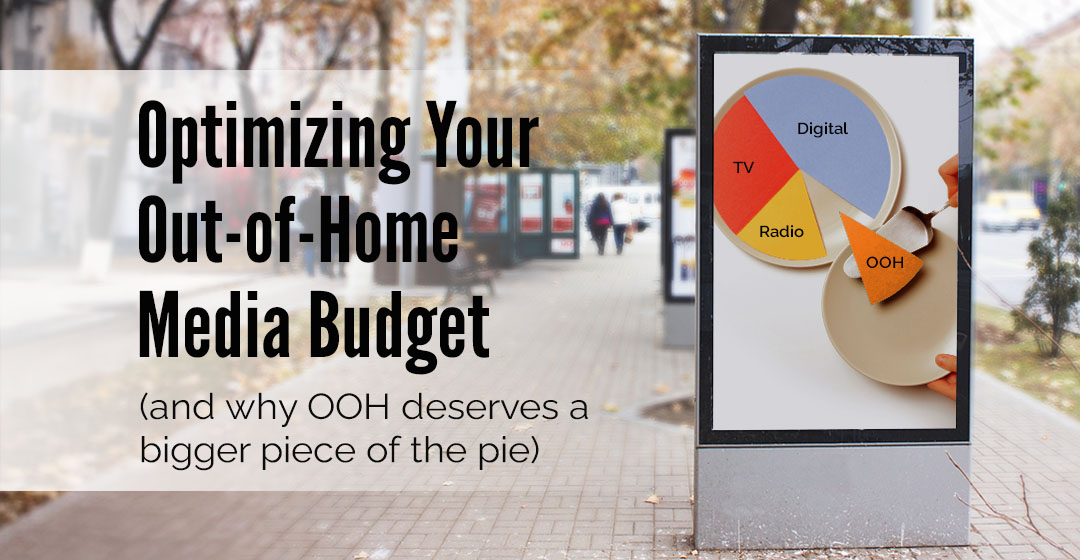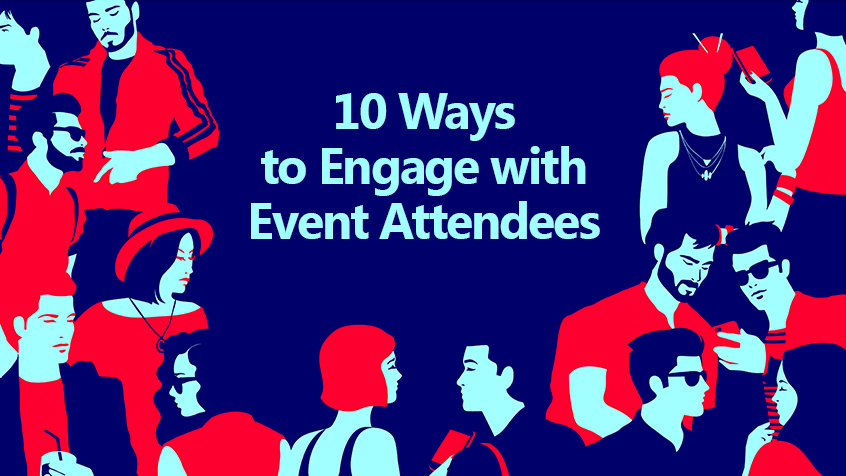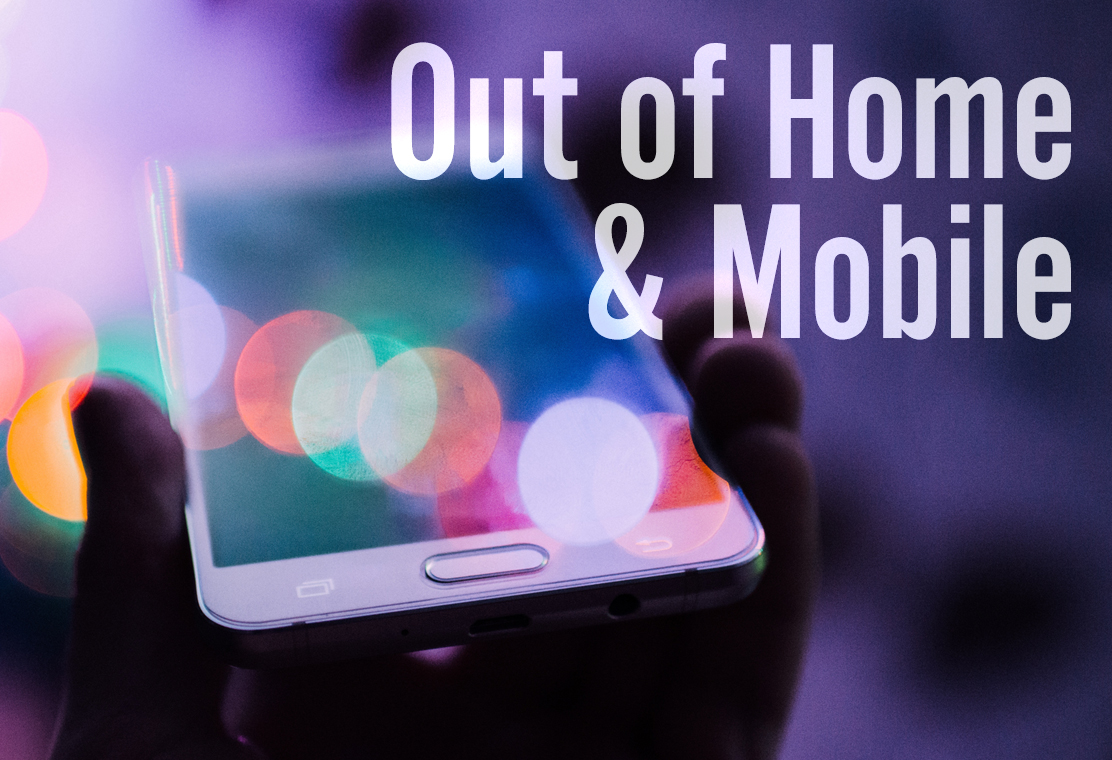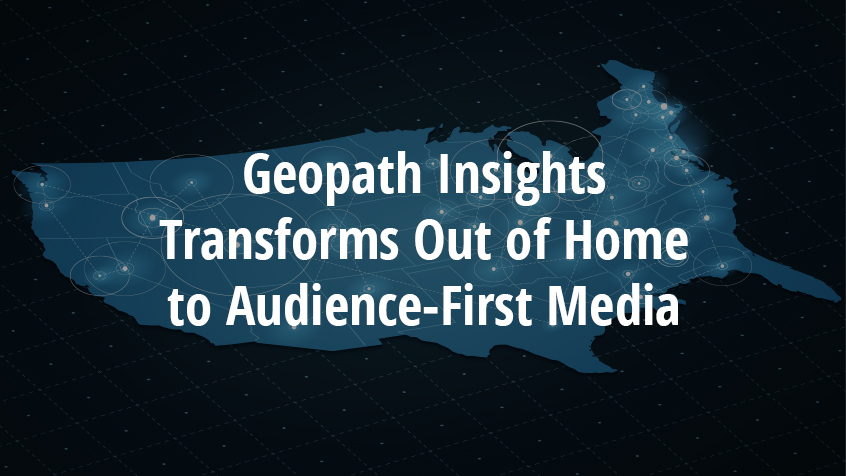It’s that time of year again, as marketers are putting the final touches on their media plans for next year and looking to wrap up their Out-of-Home media budget optimization. As Out-of-Home specialists, we know all too well that OOH is often left until the end of planning and usually only receives a very small portion of the budget compared to its flashier cousins.
This is unfortunate for marketers because boosting your Out-of-Home media budget can produce impressive results. We’re not talking about huge changes – we’re realistic about where OOH fits in the media mix. But with its low CPM and targetability, it can reach audiences efficiently and at scale, meaning that even small changes can dramatically improve results in several ways:
- Out-of-Home Media Drives ROI
- Out-of-Home improves the performance of the rest of your media budget
- Out-of-Home delivers attention, and attention delivers revenue
- Out-of-Home media works hard at driving long-term business effects
- Small changes can yield big results
Let’s take a look at some of the reasons why you should be taking a long look at allocating more of your media budget to Out-of-Home.
Out-of-Home Media Budget Optimization Drives ROI:
Marketing is all about driving business. Ultimately, it comes down to the bottom line, and our choices reflect that. When we look at media plans holistically, we know that they have to work together to drive results. When it comes to critical KPI’s, Out-of-Home media drives ROI effectively.
Recent research by Benchmarketing shows that brands that optimize the OOH budget allocation can see an average 13% improvement in RROAS. This holds across various industries and marketing goals, from awareness to consideration to activation. In marketing, where planners work hard to achieve incremental changes, the potential for a 13% improvement is not to be ignored.
These findings are corroborated by other research. A recent study by Analytic Partners showed that brands allocating proportionally more of their marketing budget to out-of-home (OOH) achieve a 17% stronger ROI.
Out-of-Home Media Is a Budget Booster:
Not only is OOH a powerful media channel in its own right, but it is also the ultimate team player. Out-of-home makes all the other media in the plan work harder, and that means your budget works harder, too.
At the most basic level, adding additional media channels yields better results. By reaching your audience at multiple touchpoints, you inherently increase the campaign’s memorability. For example, the study from Analytic Partners also showed that incorporating OOH alongside TV boosts ROI by +18% compared to using TV alone.

Over the last several years, other studies have shown that the amplification effect of OOH applies to different media channels and yields significant improvement.
- OOH media boosts the effectiveness of Display Ads by 18%
- OOH media boosts the effectiveness of Paid Search by 54%
- OOH increases the effectiveness of Radio by approximately 17%
- OOH increases the effectiveness of Print by approximately 14%
Suppose you were to invest $100K in display ads and then add OOH to the mix. That $100K now works like $118K. How much will that add to the bottom line? Out-of-home media budget optimization can boost the performance of your other media channels, which means you can generate greater business results with the same budget. Imagine going to your boss and showing improvement in your marketing across the board just by increasing your OOH investment.
Out-of-Home Media is an Attention Booster, and Attention Equals Revenue:
There’s an old saying in the billboard industry that “Seven words is one word too many.” And while the underlying message of “keep it simple” has validity, it has also led to a common misconception – that OOH doesn’t really capture audience attention. Nothing could be further from the truth.
The important thing to consider here is how long it takes for an ad to imprint on the audience’s memory. Turns out the answer is about 2.5 seconds. According to Dr. Karen Nelson Field of Amplified Intelligence:
“Time-in-view is the Achilles heel of modern measurement,” she said, pointing out that although ads might be seen, they’re often not viewed with significant engagement.
Her work reveals that attention decay is faster in digital spaces due to the fleeting nature of user interaction, particularly with scroll-based formats. 85% of digital ads receive fewer than 2.5 seconds of active attention, a figure she calls the “attention memory threshold.” Dr Nelson-Field contrasted digital advertising’s transient nature with out-of-home (OOH) formats, where 89% of ads maintain active attention beyond the 2.5-second threshold. She attributes this difference to the user experience: in OOH environments such as bus stops, the audience is naturally immersed due to their physical surroundings, allowing for more sustained attention.”
Does OOH have the same abilities as a :30 TV spot? No, of course not. However, the average exposure of 7-10 seconds for bulletins (and much longer for some street-level and pedestrian media) is more than enough time to position your brand in your audience’s memory.
Out-of-Home Media Budget Optimization Drives Long-Term Business Effects:
In today’s marketing landscape, a pervasive obsession with immediate results drives brands to focus on tactical activations like sales and special promotions. This, in turn, leads to a major focus on performance marketing and short-termism.
However, the groundbreaking research conducted by Field and Binet reveals the critical strategic error in this approach. Their landmark work, “The Long and the Short of It,” demonstrates that sustained growth emerges not from constant tactical maneuvers but from strategic brand-building investments that cultivate mental availability and long-term brand awareness. Brand-building ads boost short-term sales, and now you can prove it.
Surprisingly, CMOs themselves are beginning to recognize this misalignment. Recent surveys indicate that brands are currently allocating approximately 60% of marketing budgets to short-term performance metrics. This is the direct opposite of what Field and Binet recommended, with a 60/40 split favoring long-term brand development.

Field and Binet point out that all planning should be media agnostic, which makes sense. But when we look at its capabilities, Out-of-Home (OOH) advertising emerges as a powerful antidote to this myopic marketing mindset, offering a unique ability to drive immediate engagement and construct enduring brand narratives simultaneously.
While OOH can generate short-term performance spikes, its biggest strength probably lies in its unparalleled ability to build brand presence, create lasting mental imprints, and establish meaningful connections with diverse audiences across a range of different markets. By leveraging OOH’s expansive reach and persistent visibility and optimizing their Out-of-Home media budget, marketers can transcend the tyranny of immediate metrics and invest in a more sustainable, strategic approach to brand growth that yields compounding returns over time.
Small Shifts Can Drive Big Results:
The study from Benchmarketing goes into great detail about optimizing Out-of-Home media budget optimization for the best results. It covers a variety of campaign sizes and verticals and looks at the change in RROAS at each incremental level of the change in OOH spend. While they do suggest some significant changes in allocation, the study shows that much of the positive effect is realized within the first couple of increments.

The results are undeniably impressive. Optimizing the average OOH spend for Grocery Retail yielded a very respectable 6% in ROAS while optimizing the average OOH spend for CPG-Food yielded an impressive increase of 27% in ROAS.
We can also see that brands typically spend well below the inflection point of diminishing returns for OOH and well above that point for many other channels.

Out-of-Home Media Budget Optimization Yields Results:
Out-of-Home (OOH) media represents a transformative marketing opportunity that smart brands cannot afford to overlook. Recent research reveals compelling advantages that make OOH an essential component of any comprehensive media strategy:
- Out-of-Home Media Drives ROI
- Out-of-Home improves the performance of the rest of your media budget
- Out-of-Home delivers attention, and attention delivers revenue
- Out-of-Home media works hard at driving long-term business effects
- Small changes can yield significant results
Ready to Supercharge Your Media Strategy? Contact Our OOH Experts Now!
The data is clear: Out-of-Home media offers an untapped potential to transform your marketing performance dramatically. With proven ROI improvements of up to 17%, channel amplification effects ranging from 14-54%, and unparalleled audience attention, OOH is the strategic advantage your brand needs. Our seasoned OOH specialists can help you with Out-of-Home media budget optimization, craft targeted campaigns, and unlock substantial business growth.
Don’t leave money on the table – schedule a complimentary strategy consultation today and discover how a strategic OOH investment can revolutionize your marketing results.





